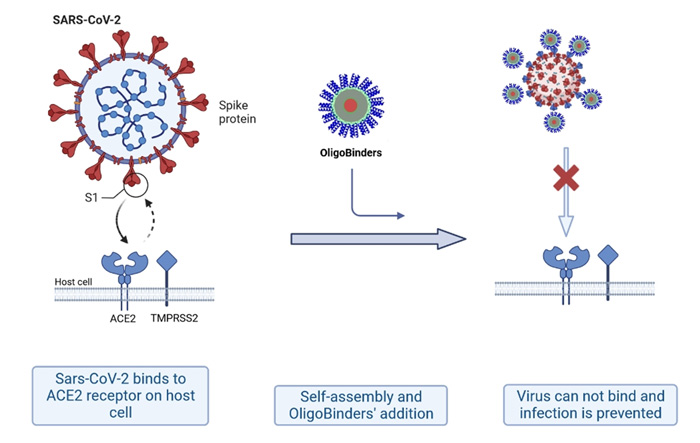The modularity, controlled self-assembly, and stability of amyloid protein-inspired nanomaterials are attracting attention in nanotechnology. The ability to incorporate protein molecules with the appropriate functionality via genetic engineering is a significant benefit of these materials. Since many are insoluble and unable to be delivered through bodily fluids, they are unsuitable for biological uses.
The SARS-CoV2 virus can be neutralized by a novel form of nanoparticle created by researchers at the Universitat Autònoma de Barcelona (UAB) and inspired by the amyloid structure. The nanostructures, known as OligoBinders, have a strong ability to bind viral particles and are soluble, biocompatible, and stable in plasma. This binding prevents the viral spike protein from interacting with the ACE2 receptor on the cell membrane, which causes infection.
Salvador Ventura and Susanna Navarro, scientists from the UAB’s Institute of Biotechnology and Biomedicine (IBB) and Department of Biochemistry and Molecular Biology, were the principal investigators of the study, which was published in the journal ACS Applied Materials & Interfaces.
The researchers linked two mini proteins, LCB1 and LCB3, to a tiny yeast peptide known as Sup35 to take advantage of its ability to self-assemble into the nanoparticles. Three helices are used to create these mini proteins, which are extremely stable and make several interactions with the viral protein.
Because of their modular design strategy, they created two spherical nanoparticles with more than 20 copies of LCB1 or LCB3 on each surface. Susanna Navarro says, “This characteristic offers the nanoparticles considerable avidity for the virus and permits them to bind simultaneously to numerous spike proteins.
The researchers emphasize the strong inhibitory efficacy of these novel nanoparticles and their potential as an adequate substitute for monoclonal antibodies for trapping or neutralizing the virus in their investigation, which was conducted on particles comparable to the SARS-CoV2 virus (SC2-VLP).
The created nanospheres might be used in biomedicine, such as self-administered nasal treatments, biotechnology, the creation of diagnostic kits, or as a potential preventive agent. In addition, given that assembly happens spontaneously once the molecules have been incubated, mass production would be simple and affordable.
“For other viruses of interest, our modular approach might be modified by adding the matching inhibitory domain to the nanoparticle. Also, it presents the opportunity to develop compounds with increased antiviral capabilities in the future by combining two or more functional areas into nanoparticles that simultaneously target various virus molecules,” Salvador Ventura explains.















